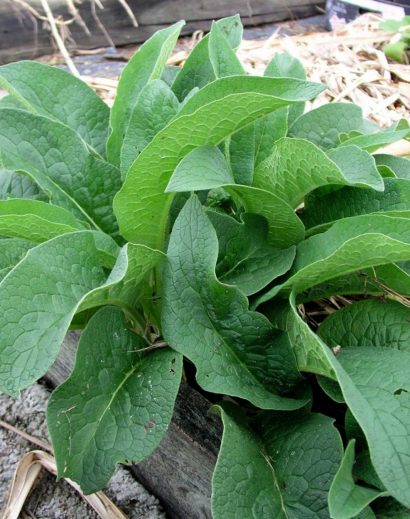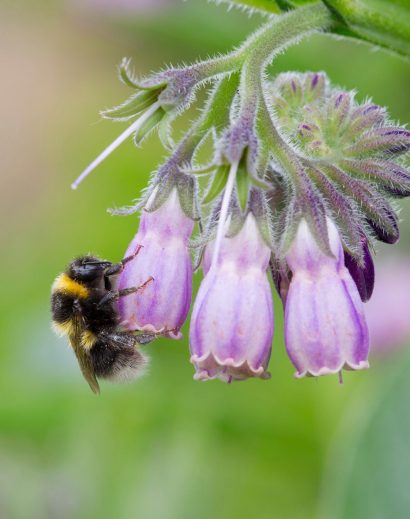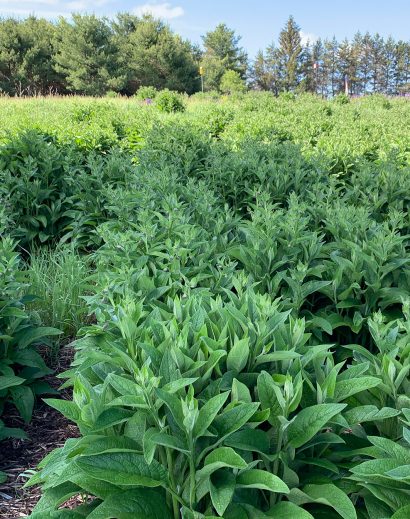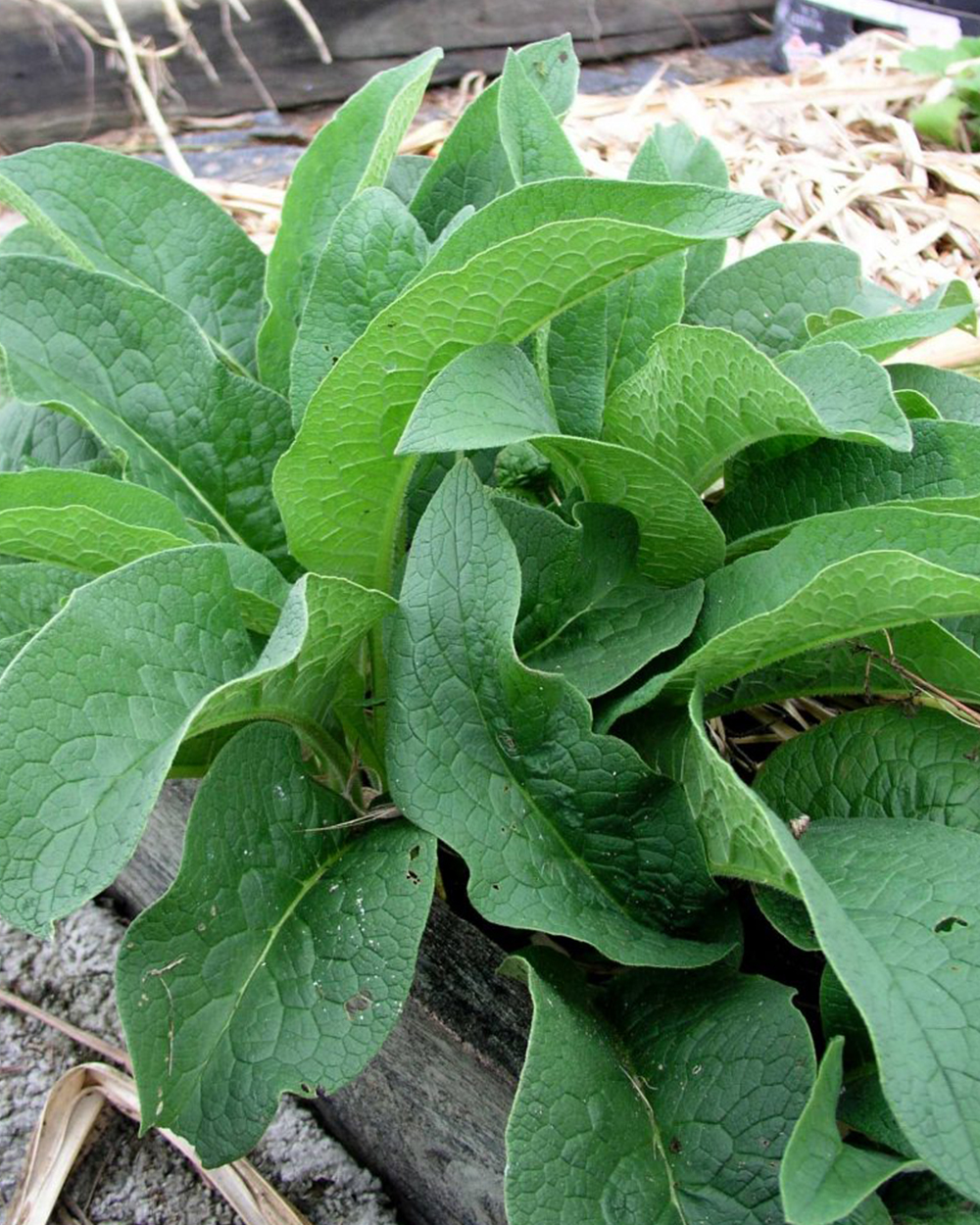Russian comfrey, scientifically known as Symphytum x uplandicum, is a specific variety of comfrey known for its vigorous growth and higher nutrient content compared to the common comfrey (Symphytum officinale). Here’s a description of Russian comfrey:
- Appearance: Russian comfrey shares many visual characteristics with common comfrey. It is a herbaceous perennial plant that typically grows to a height of 2 to 3 feet (60 to 90 cm). The plant has broad, lance-shaped leaves that are covered in coarse hairs, giving them a slightly rough texture. The leaves can range from dark green to deep blue-green in color.
- Flowers: Russian comfrey produces clusters of tubular flowers that can be white, pink, or purple, similar to other comfrey varieties. These bell-shaped flowers are attractive to pollinators like bees.
- Growth Habit: One of the key features of Russian comfrey is its robust and fast-growing nature. It has deep, extensive roots that allow it to access nutrients from deep within the soil, making it a valuable plant for nutrient accumulation and cycling in permaculture and organic gardening systems.
- Nutrient Accumulator: Russian comfrey is often referred to as a “dynamic accumulator” because of its ability to accumulate essential nutrients, particularly potassium, phosphorus, and nitrogen, in its leaves. These nutrients can be released when the leaves are used as mulch or when comfrey tea is made from them for use as a natural fertilizer.
- Garden Use: Russian comfrey is popular among gardeners and permaculturists for its role in improving soil fertility. Its deep root system helps break up compacted soil, and its nutrient-rich leaves can be used as mulch or compost to nourish other plants.
Russian comfrey is a valuable addition to gardens and permaculture systems due to its ability to improve soil quality and provide a natural source of nutrients for other plants.






Reviews
There are no reviews yet.